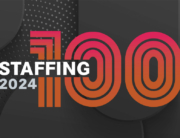It’s no longer enough to simply be a transaction factory or supply chain administrator; rather, the managed service program of today and tomorrow must be a strategic advisor that can guide clients through the challenges of the gig economy; build, buy or borrow talent decisions; and a host of other issues.
In 2013, Staffing Industry Analysts reported that more than 50% of established MSP programs had entered their second generations. Now, version 3.0 is on the horizon.
“Clients want us to be a meaningful participant that can provide total workforce solutions and access to the right partners and talent pools,” notes Stacie Habegger, chief sales officer for ACT•1 and MSP, Agile•1.
Meeting clients’ rising expectations requires a new approach and a revised model. And though many MSPs are still putting the finishing touches on their latest release, here’s a look at the key features implemented thus far and their impact on staffing suppliers.
Total Talent Solutions
As employers increase their reliance on flexible workers and the gig economy expands, HR and line managers are embracing the concept of total talent management (TTM) and becoming more involved in MSP programs.
The quest to find the most advantageous mix of full-time and flexible workers to ensure business success is encouraging some MSPs to converge with RPOs. While other MSPs have launched consulting practices that specialize in succession planning, staff retention, compensation and diversity to support the development of comprehensive talent solutions and to provide additional sources of revenue as the global MSP market matures.
“Our clients expect us to analyze complex human capital problems across the enterprise, propose and deliver a cost-effective, talent-agnostic solution regardless of the employment status or source of the workers,” explains Pat McCall, chief sales officer for Randstad Sourceright.
The optimal solution could involve a blend of SOW contractors, independent contractors or freelancers who bill based on fixed-fee tasks, deliverables, milestones or time and materials. As a result, several MSPs and staffing firms are adapting their sourcing practices and invoicing systems to accommodate “talent in a cloud” and the preferences of in-demand freelancers.
And to ensure the capture of total labor expenditures, many MSPs now oversee direct placement and executive search firms, independent contractors and RPOs and the selection of contingent staffing firms.
While expanding the umbrella of MSPs could provide additional business opportunities for staffing partners, it’s actually a double-edged sword. The move enables MSPs and clients to bypass the traditional supply chain and source talent directly from alumni networks, employee referrals, crowdsourcing sites for freelancers and other virtual talent pools.
“There are a lot of options out there for sourcing on-demand talent,” notes Lynne Marie Finn, president and CEO of Superior Workforce Solutions Inc. “The role of staffing firms may become less critical because the acquisition process can be managed by the MSP or the employer.”
Data-Driven Decisions
Many companies exhausted the obvious sources of cost savings during the first years of their managed programs, so now they’re using “people analytics” to discover more cost-effective ways to source, attract, hire and retain high caliber workers.
For example, clients expect their MSP to anticipate and avert talent shortages or alleviate excessive turnover among seasonal employees by analyzing internal and external data sets and making predictive and prescriptive recommendations. To that end, many MPS have added big data analytics teams and training programs to bolster the success of newbies.
“Clients expect us to be out in front of the hiring trends and adjust our supplier base and strategies to provide access to the best talent pools,” Habegger says. “Here at Agile•1, we’ve hired a team of labor economists to help us interpret the data and recommend the best geographic sources of talent and the best mix of workers for getting work done.”
Since the analytical process assimilates worker feedback and third-party wage and performance data, the solutions often result in higher pay rates and environmental upgrades that bolster the ability of independent staffing firms to source and retain quality workers.
“We used to be reactive in terms of recruiting,” says Raja Narayana, president of Aditi Staffing. “Now, we receive a hiring forecast during quarterly business reviews and that’s changed the way we engage our consultants and helped us maximize our CRM system.”
Quality Over Quantity
Early adopters of managed programs sought cost savings, efficiencies and reduced co-employment risk, so first generation scorecards measured transaction processing performance, speed and compliance with rates and tenure limits for contingent workers.
Unfortunately, the benchmarks didn’t consider the amount of time managers spent interviewing or the quality of submitted candidates. And MSPs and clients often overlooked the frustration of mismatched candidates who didn’t understand the vetting process or why they were rejected, according to Ashish Kaushal, CEO of IT staffing firm HireTalent.
Under the 3.0 model, benchmarks and servicelevel agreements put greater emphasis on quality, retention and creating a positive experience for candidates which is integral to building a robust employment brand.
“I think MSPs and clients have become more aware of the needs of staffing firms,” Habegger says. “We’re putting a greater emphasis on balancing high-tech processing with high-touch and we’re willing to be more flexible with rates to acquire and retain top talent.”
For instance, in some cases, HireTalent receives a credit if a statement-of-work contractor finishes a project ahead of schedule. And because studies show that a candidate’s experience during the hiring process influences their buying decisions, Kaiser Permanente insists on treating candidates like customers, notes Leslie Marsh, HireTalent’s VP of talent partnerships.
End clients like Facebook and Microsoft are actually encouraging staffing firms to offer generous paid time off and parental leave by agreeing to foot part of the bill, according to Narayana.
He’s not only upgraded his firm’s benefits, he’s hired a team of consultant care specialists to checkin with tech contractors on long-term assignments.
“Clients want us to showcase their environments as creative or innovative and keep people for as long as possible,” Habegger says. “That’s producing new metrics and changing the way we interact with candidates.”
Industry-Focused Models
As MSPs take on a more strategic role, they are moving away from one-size-fits-all delivery systems to specialized models that cater to the needs of clients in financial services, biotech or telecom industries. Transitioning to a vertical service model increases strategic alignment through the addition of program staff and suppliers with specialized expertise, explains Dave McGonegal, VP, strategic client solutions, ManpowerGroup Solutions.
“A focused model creates business opportunities for niche staffing providers whose recruiters are familiar with an industry’s regulations, standards and sourcing channels,” McGonegal says.
For instance, there’s a shortage of professionals with the expertise and access to open new markets for drugs in the clinical development pipeline. Engaging a niche staffing firm provides additional sourcing channels and the opportunity to implement outside-the-box solutions to industrywide staffing challenges.
Fully Engaged Suppliers
Staffing firms that have shied away from working with MSPs because they want to play a substantive role in strategy development or nurture relationships with hiring managers, may find the 3.0 model more to their liking. First, the competition for talent and the need for greater transparency in terms of staffing performance is pushing clients away from vendor-neutral bidding to hybrid or direct sourcing models that support greater interaction according to McCall.
And the increased focus on quality and TTM is creating additional opportunities for suppliers to collaborate in the development of holistic talent solutions. In fact, many MSPs host annual supplier summits to encourage inclusion and strategic discussions.
“A good MSP is a facilitator, not a gatekeeper,” McGonegal notes. “We need to mobilize our entire network of resources and weigh different approaches to come up with truly innovative talent solutions that meet the evolving needs of our clients.”







